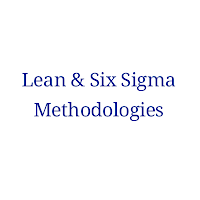Previously we shared about Agile and Waterfall project management approaches. Now, we will define some key concepts from Lean and Six Sigma methodologies. We will learn how these methodologies can be used to organize and manage your projects, and we will discuss which is the most effective for different kinds of projects.
Lean
Lean methodology is often referred to as Lean Manufacturing because it originated in the manufacturing world. The main principle in Lean methodology is the removal of waste within an operation. By optimizing process steps and eliminating waste, only value is added at each phase of production.
Today, the Lean Manufacturing methodology recognizes eight types of waste within an operation: defects, excess processing, overproduction, waiting, inventory, transportation, motion, and non-utilized talent. In the manufacturing industry, these types of waste are often attributed to issues such as:
- Lack of proper documentation
- Lack of process standards
- Not understanding the customers’ needs
- Lack of effective communication
- Lack of process control
- Inefficient process design
- Failures of management
These same issues create waste in project management.
Implement Lean project management when you want to use limited resources, reduce waste, and streamline processes to gain maximum benefits.
You can achieve this by using the pillars of the Lean 5S quality tool. The term 5S refers to the five pillars that are required for good housekeeping: sort, set in order, shine, standardize, and sustain. Implementing the 5S method means cleaning up and organizing the workplace to achieve the smallest amount of wasted time and material.
The 5S method includes these five steps:
Sort: Remove all items not needed for current production operations and leave only the bare essentials.
Set in order: Arrange needed items so that they are easy to use. Label items so that anyone can find them or put them away.
Shine: Keep everything in the correct place. Clean your workspace every day.
Standardize: Perform the process in the same way every time.
Sustain: Make a habit of maintaining correct procedures and instill this discipline in your team.
Within the Lean methodology, 5S helps you boost performance.
The final concept of Lean uses a Kanban scheduling system to manage production. The Kanban scheduling system, or Kanban board, is a visualization tool that enables you to optimize the flow of your team’s work. It gives the team a visual display to identify what needs to be done and when. The Kanban board uses cards that are moved from left to right to show progress and help your team coordinate the work.
Kanban board, showing columns (to do, in progress, testing, and done) with sticky notes representing tasks of a project.
Kanban boards and 5S are core methods of the Lean methodology. They can help you successfully manage your project. Now let’s analyze the Six Sigma method and learn when is the best time to use it.
Six Sigma
Six Sigma is a methodology used to reduce variations by ensuring that quality processes are followed every time. The term “Six Sigma” originates from statistics and generally means that items or processes should have 99.9996% quality.
The seven key principles of Six Sigma are:
- Always focus on the customer.
- Identify and understand how the work gets done. Understand how work really happens.
- Make your processes flow smoothly.
- Reduce waste and concentrate on value.
- Stop defects by removing variation.
- Involve and collaborate with your team.
- Approach improvement activity in a systematic way.
Use this methodology to find aspects of the product or process that are measurable like time, cost, or quantity. Then inspect that measurable item and reject any products that do not meet the Six Sigma standard. Any process that created unacceptable products has to be improved upon.
Now that you understand both Lean and Six Sigma, let's see how they come together to improve the performance of your project!
Lean Six Sigma
After both Lean and Six Sigma were put into practice, it was discovered that the two methodologies could be combined to increase benefits. The tools used in Lean, such as Kanban boards and 5S, build quality in processes from the beginning. Products developed using Lean methods are then inspected or tested using Six Sigma standards. The products that do not meet these standards are rejected.
The largest difference between these methodologies is that Lean streamlines processes while Six Sigma reduces variation in products by building in quality from the beginning and inspecting products to ensure quality standards are met. You may find that one of these two methods—or using them both together—can improve the efficiency of your projects.


إرسال تعليق